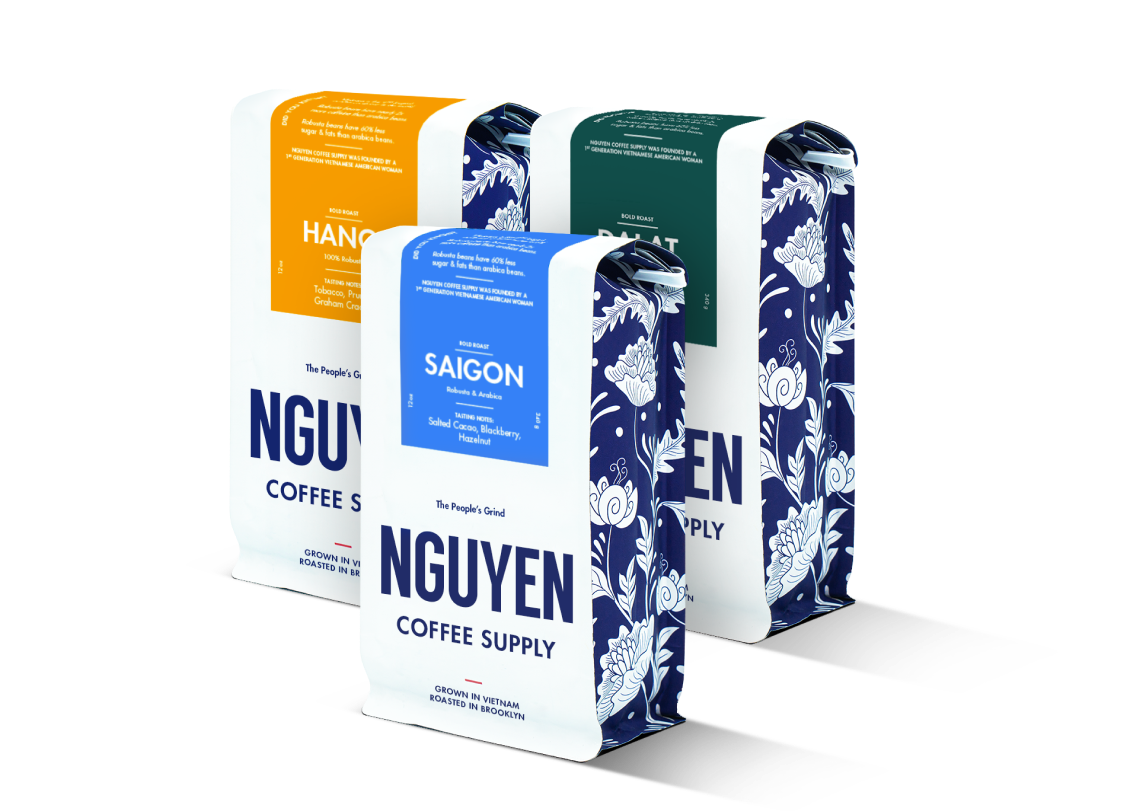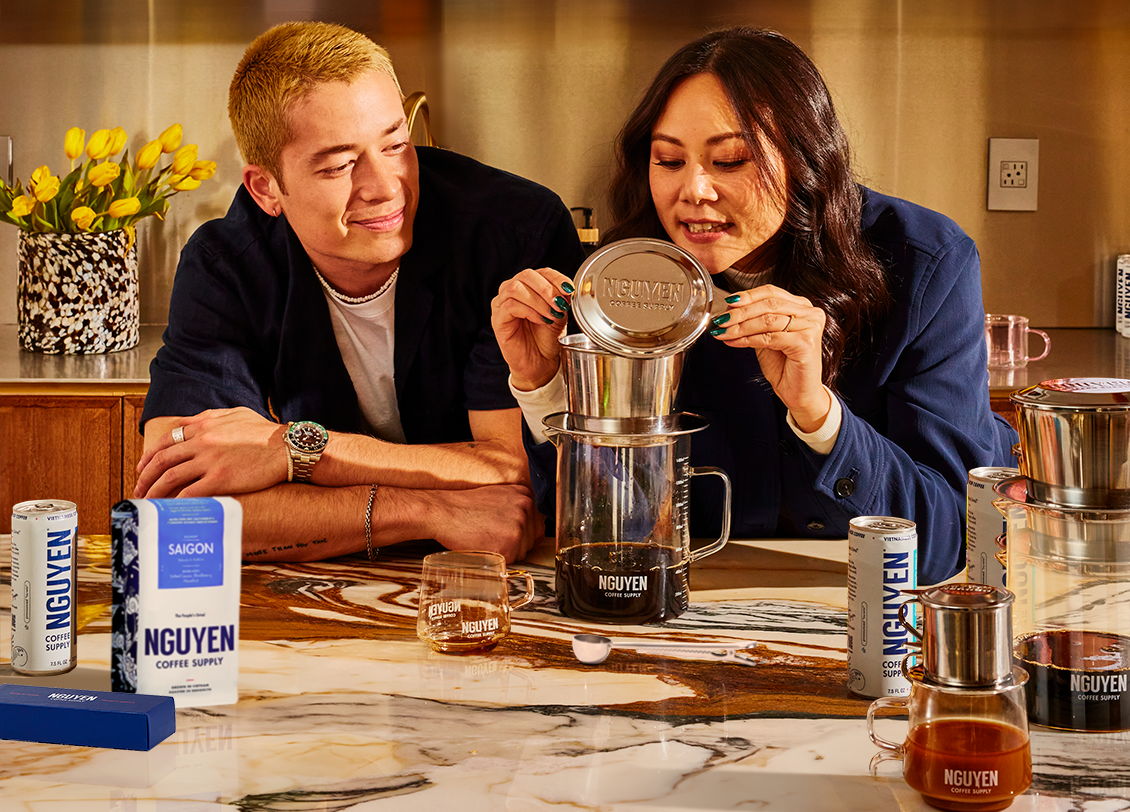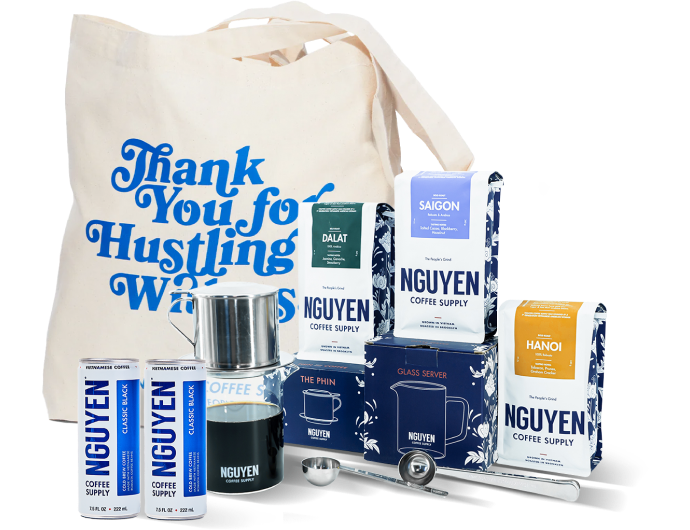

- FEATURED ON IMBIBE

Create for yourself or as a gift for your loved ones
Subscribe nowMe and mom just enjoyed the Nguyen phin drip experience. Wow. Proud of your work. We without hesitation enjoy the Vietnamese coffee and recommend your products. Thank-you to the Nguyen staff and tradition. From Canada eh!
If you’re reading this, you may be wondering what Vietnamese coffee is and how to make it. Having grown up with Vietnamese coffee and culture ourselves, we’re here to introduce you to a part of our heritage that is becoming more popular these days.
Simply put, Vietnamese coffee refers to coffee beans that are grown and produced in Vietnam. Most often, Vietnamese coffee is robusta, a species of coffee that has historically been grown for mass consumption and commercial coffee blends. Vietnam is the second largest producer of coffee in the world and the leading producer of robusta coffee, so it’s safe to say that robusta coffee is an integral part of what comprises Vietnamese coffee as well outside of origin.
While many products or cafes may label their coffee or drinks as Vietnamese coffee, they must be from Vietnam in order to be truly considered Vietnamese coffee.
We’re no strangers to asking what’s in our cups! If you see something labeled as Vietnamese coffee, but see that the beans do not come from Vietnam, this is a great moment to have a conversation about what makes Vietnamese coffee what it is. If a cafe uses beans from a different country and prepares a drink to emulate Vietnamese coffee, it’s really an inspired drink and not technically Vietnamese coffee.
Why does this matter? For starters, it’s about transparency and visibility. When we recognize Vietnamese coffee as coffee grown and produced in Vietnam, we recognize the producers and their efforts. With more visibility comes more opportunities for production and specialization as the Vietnamese coffee movement grows– it’s not purely semantics! This definition is rooted in putting people and the cultural cachet of Vietnam first and foremost.
In Vietnam, coffee is most commonly brewed in a phin filter, which is like a cross between a V60 pour over and a French press. These ergonomic brew tools are no-waste and highly efficient at brewing a concentrated cup of coffee.
The phin filter consists of a filter plate, filter chamber, gravity press (or screw on press), and a lid. Ground coffee is placed into the chamber followed by the press. Then, hot water is poured over to brew the coffee. The water steeps the coffee and passes through the filter chamber and filter plate, resulting in a concentrated brew that many people liken to espresso.
These days, Vietnamese coffee is prepared in a variety of ways from pour over to espresso to siphon and beyond. A key distinction: the phin filter is a traditional brew method that is integral to Vietnamese coffee culture, but it is not synonymous with Vietnamese coffee overall. Vietnamese coffee can be brewed however you enjoy it, so long as the grind size of the coffee beans are dialed in appropriately!
To make Vietnamese coffee, you’ll need the following:
There isn’t a precise or absolute way to make or enjoy Vietnamese coffee! While we love and encourage the use of a phin filter, it’s not an absolute must. You can brew your Vietnamese coffee beans in an auto drip, as cold brew, as espresso, or however else you like. Remember: you’ll need to grind the coffee accordingly for the respective brew application.
If you’re looking for a recipe to make Vietnamese ICED coffee (cà phê sữa đá), we’ve got you covered. Vietnamese iced coffee is ultimately just a drink preparation and recipe, though we understand how it can be conflated with Vietnamese coffee in general due to its immense popularity.
In essence, iced coffee combines brewed coffee with ice. Vietnamese iced coffee is unique however, in that it employs the use of sweetened condensed milk as both dairy and sweetener whereas other iced coffees use other forms of milk and sugar. Additionally, Vietnamese iced coffee most often uses coffee brewed using a phin filter for a more concentrated brew that perfectly compliments the richness of sweetened condensed milk.
Though Vietnamese iced coffee is among the most popular Vietnamese coffee beverages, there are a handful of other drinks that are also considered Vietnamese iced coffee (in English at least) such as cà phê đá (iced black coffee) and cà phê bạc xỉu (white coffee made with more parts condensed milk than coffee).
When we expand the understanding of Vietnamese coffee, we open ourselves up to a world with more diverse offerings and rich cultural histories. While many continue to refer to Vietnamese coffee as a drink, we’re here to assert that Vietnamese coffee is an entire category unto itself the same way coffee from any other country is its own category with its own unique history and traditions.
--
Learn how you can make Vietnamese coffee in a number of ways here.